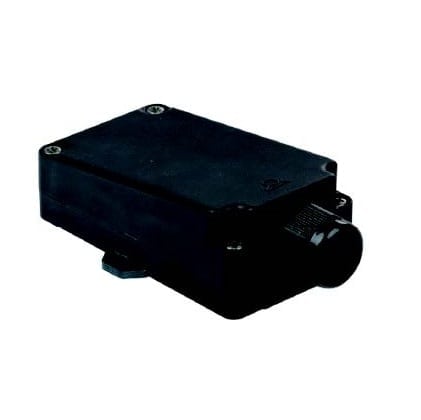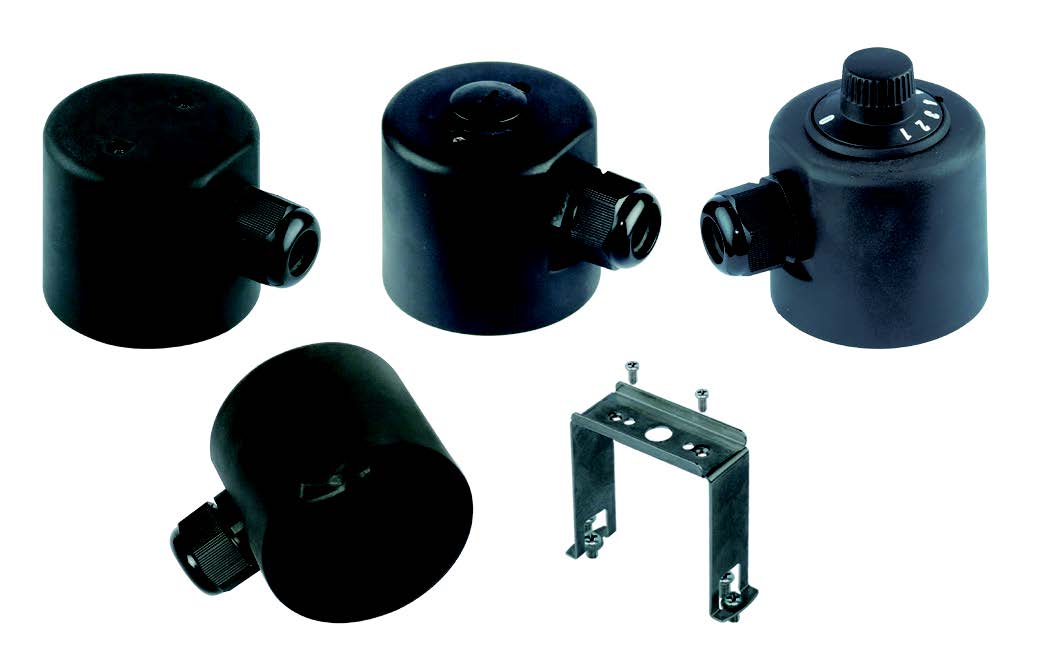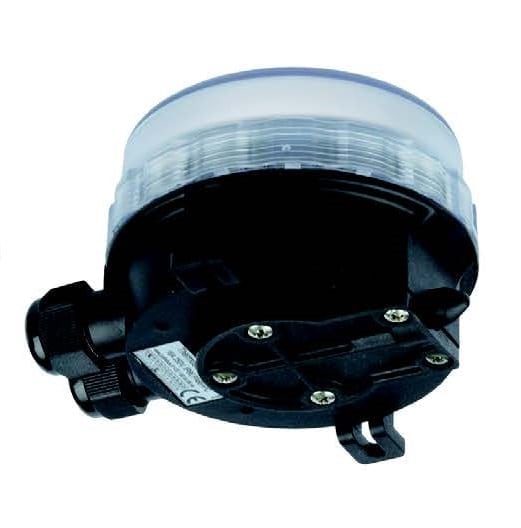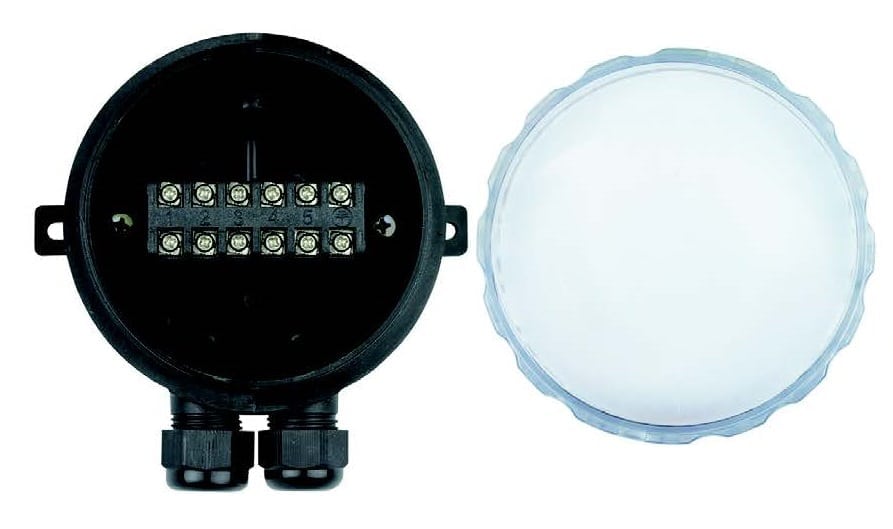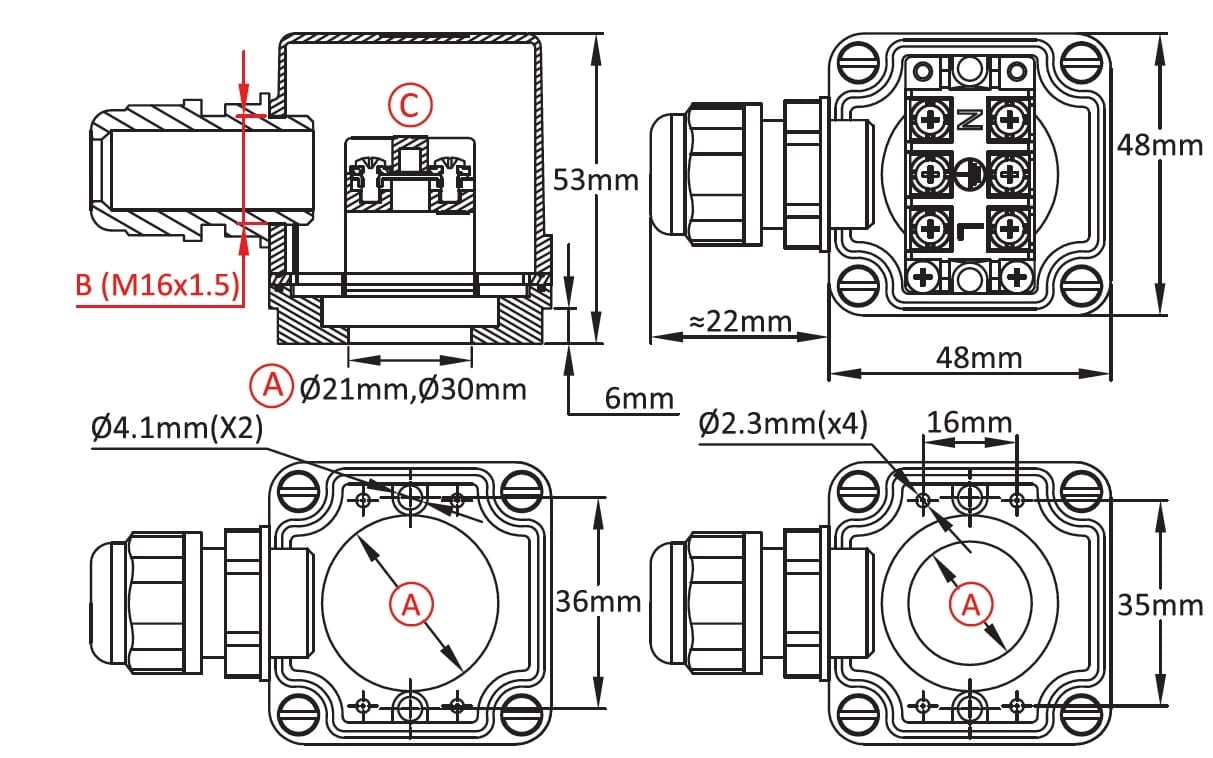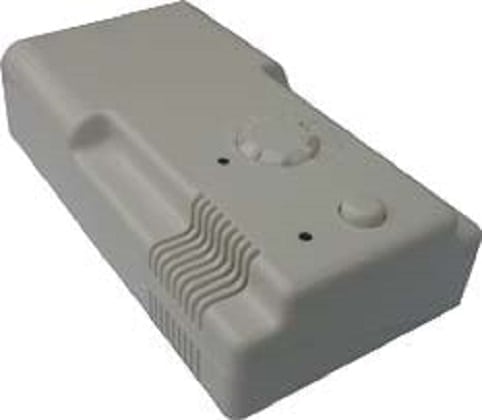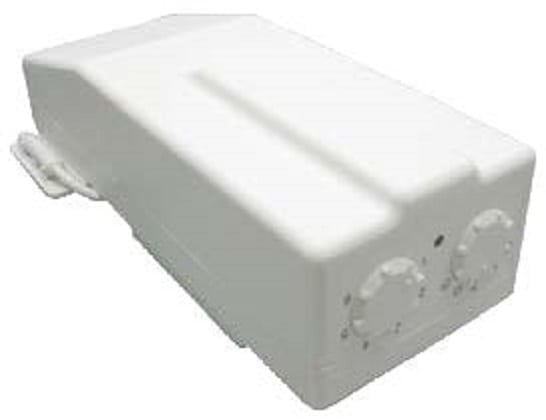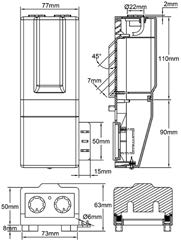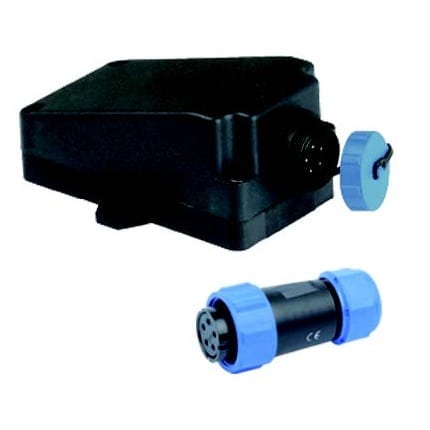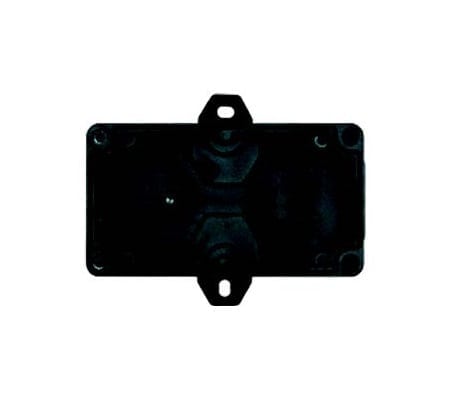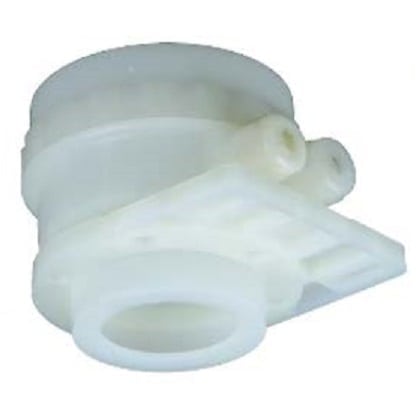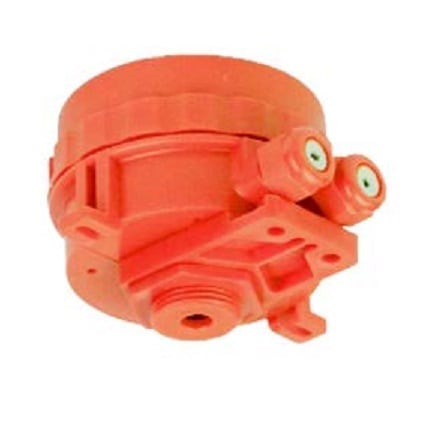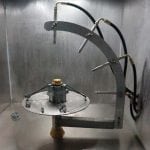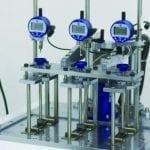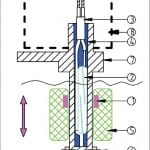Send an inquiry
Miniature PA66 enclosure, removable wall mounting bracket, Y3A3
This housing is suitable for temperature sensor, level sensor, electronic printed circuit or cartridge heater.
| Dimensions | 100 × 56 × 37 mm |
|---|---|
| Ingress protection | |
| Mechanical protection | |
| Housing raw material | |
| Volume (cm³) |
SKU: Y3A3
Categories: Plastic housings, Accessories for electro thermal control boxes
Tags: PA66, plastic housing, enclosure, Removable wall mounting bracket, Miniature, IP69K, IK10
Red dimensions inside rectangular frames on drawings are used for accessories assembly.
Main features
This housing is suitable for temperature sensor, level sensor, electronic printed circuit or cartridge heater.
Size: 100 x 56 x 37mm
Volume: 208 cm³
Material: PA66
Ingress protection: IP69K
Mechanical impact resistance: IK10
Main references
| A | With connection block C | Without connection block C |
| 0 | Y3A300001E0F100T | Y3A300001E00000T |
| 8 | Y3A308001E0F100T | Y3A308001E00000T |
| 21 | Y3A321001E0F100T | Y3A321001E00000T |
Others drilling diameters on request.
3D models are available on request under .stp format
Downloads
Related products
Plastic housings
Simplified round enclosure for 2”1/2 and M77x2 fittings, Y3C3
Plastic housings
Plastic housings
Technical informations associated to this product
-
Electrical protection classes
The housings are designed to protect electrical equipment located inside. This protection must be considered in the electrical and environmental angles.) -
Technical introduction of connection blocks made in ceramic and polyamide
Ceramic was the first insulating material used in the electrical connection terminals. Mechanically resistant, exceptionally fire resistant, excellent electrical insulator, it had all the qualifications. Produced from locally available raw materials, ceramic and porcelain glazed electro-technical parts were essential in the beginnings of electricity until the appearance of Bakelite in the 1930s, then of engineered thermoplastics to 1960. -
Main properties of plastic raw materials used for enclosures
The classic housings, with only 5 sides and a lid, require a long and costly layout, most of the time ignoring the application needs: security, fire resistance, water penetration, shocks, UV, temperature, etc. -
Float level switches technical introduction
Selecting a magnet for a level switch application must take into account the characteristics of the liquid in which it will be immersed, of the temperature at which it will be subjected, of its corrosion resistance, of the magnetic field required to operate the switch and its distance to the reed switches. Sintered magnets are shock and vibration sensitive, “bonded” magnets have a low temperature resistance due to the resins used to agglomerate, and Neodymium –Iron-Boron magnets contain 60-75% iron (amount is dependent on grade) and are therefore prone to corrosion.

